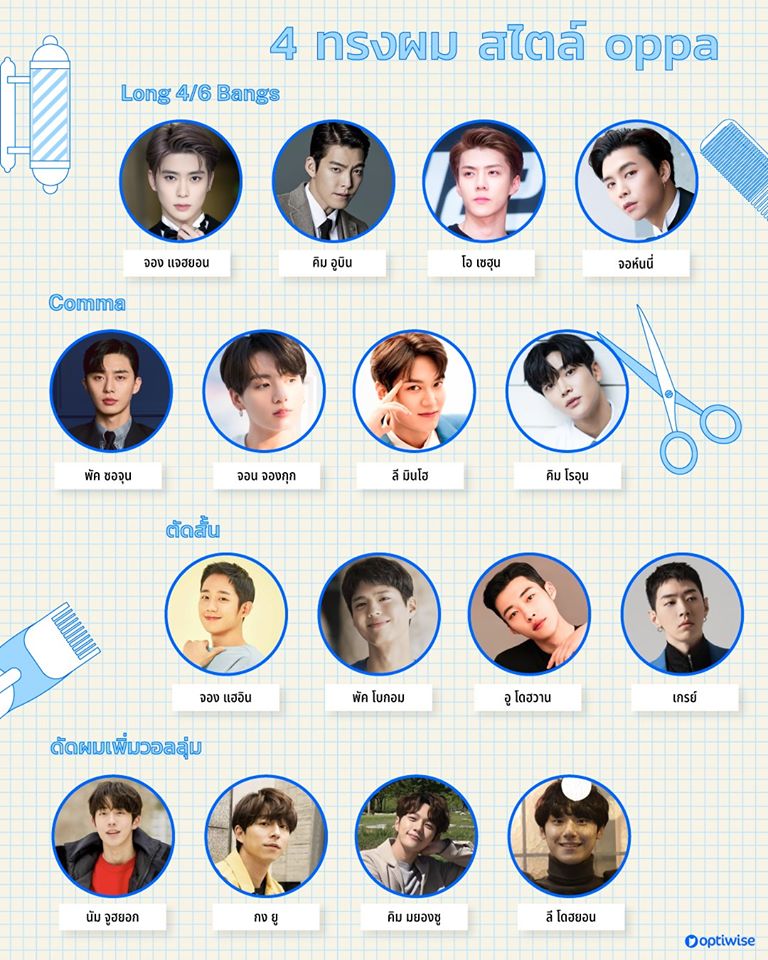IR Website: Tips for Creating an Investor Relations Website that Meets Investors’ Needs

An IR website, or Investor Relations website, is a vital platform used by publicly listed companies to communicate key information—such as financial performance, news updates, and financial data—to investors and stakeholders. It plays a crucial role in enhancing transparency, building trust, strengthening corporate image, and effectively meeting the needs of investors in the digital age.
What is an IR Website?
An IR Website, or Investor Relations Website, is an online platform used by public companies to publish essential information about their operations, financial performance, and corporate news for investors and other stakeholders.Importance of an IR Website
- Enhancing transparency and information accessibility: It enables companies to officially and consistently disclose financial and critical information, allowing investors to access data quickly and conveniently.
- Building trust: Providing complete and accurate information helps establish investor confidence, which is crucial for maintaining and attracting new investors.
- Effective communication: Serves as a channel for disseminating key updates such as earnings reports, corporate changes, or other disclosures essential for investor decision-making.
- Reinforcing corporate image: A professionally designed website with comprehensive information enhances the company's credibility and stability in the eyes of investors.
- Saving time and resources: Reduces the burden of distributing physical documents and responding to repetitive investor inquiries.
Users and Stakeholders Involved with an IR Website
- Retail and institutional investors: Use the information to make investment decisions.
- Analysts: Rely on the data for evaluating and valuing the company.
- Shareholders: Monitor the company’s performance and updates.
- Media: Use it as a source of information for news reporting on the company.
- Employees and executives: Refer to it for internal corporate information.
- Regulatory agencies: Review disclosures for compliance with regulations.
- Business partners and affiliates: Study the information for making business decisions.
Having an effective IR Website is therefore essential for public companies to foster trust, ensure transparency, and maintain efficient communication with all stakeholder groups.
Key Components of an IR Website
An effective Investor Relations (IR) website comprises several essential elements that allow investors and stakeholders to access important corporate information comprehensively. These components include:
- Company Profile: This section should include the company's history, vision, mission, organizational structure, and business operations. For example, PTT Global Chemical Public Company Limited presents its founding year and the location of its headquarters.
- Financial Information: This should contain annual financial statements, balance sheets, and cash flow statements, along with quarterly performance data, financial analysis, and long-term financial targets.
- Financial Statements: Both annual and quarterly financial reports should be provided, covering separate and consolidated statements. For instance, PTT Public Company Limited displays financial statements categorized by type and reporting period.
- Earnings Summary: Key performance summaries such as revenue, net profit, and important financial ratios should be clearly presented.
- Dividend Information: The site should disclose dividend policy and historical dividend payouts. For example, Ratchaphruek Hospital Public Company Limited has a policy of paying dividends of no less than 40% of net profit.
- Shareholders' Information: This section should show the shareholder structure, list of major shareholders, and shareholding proportions.
- News & Events: The website should regularly update company news and announcements, such as new product launches, mergers and acquisitions, or management changes.
- Shareholders' Meeting: Relevant details of shareholder meetings should be provided, including invitation letters, agendas, and meeting minutes.
- IR Calendar: This should include key dates such as earnings announcements, shareholder meetings, and other IR-related activities.
- Corporate Governance: The site should feature policies on good corporate governance, business ethics, and sustainability reports.
- Board of Directors & Management: Profiles and backgrounds of board members and senior executives should be available.
- Contact Information: Clear contact details for the IR department, including address, phone number, and email, should be provided.
How to Design an Effective IR Website
Designing an effective Investor Relations (IR) website requires attention to several key factors to ensure that users can access information easily and securely. The following are essential considerations:User-Friendly Interface
- Use a well-organized and intuitive website structure with clearly categorized information.
- Design a simple and clear navigation menu.
- Use plain, easy-to-understand language and avoid overly technical jargon.
- Present information in engaging formats, such as graphics, videos, and interactive content.
- Reduce the size of files such as images, videos, and scripts.
- Implement lazy loading techniques to load only the content the user is currently viewing.
- Fix render-blocking resources to allow browsers to process content more quickly.
- Use a Content Delivery Network (CDN) to distribute content loading.
- Apply responsive design to ensure the website displays properly across all devices.
- Design buttons and links to be large enough for tapping on touchscreens.
- Arrange content in a single-column layout for mobile displays.
- Use easy-to-read fonts at appropriate sizes, especially for key information.
- Use data encryption and access control to prevent unauthorized access.
- Implement HTTPS and SSL (Secure Sockets Layer) to ensure secure connections.
- Regularly update security systems to guard against emerging threats.
- Restrict access to sensitive information to authorized personnel only.
Best Practices for Creating an IR Website
Creating an effective Investor Relations (IR) website requires attention to several best practices to ensure the site meets the needs of investors and stakeholders efficiently.1. Regularly Updating Information
- Establish a clear schedule for updating content, especially for critical data such as quarterly earnings.
- Utilize a Content Management System (CMS) to allow the IR team to update information quickly and efficiently.
- Regularly verify the accuracy of links and ensure all website features function properly.
- Use infographics to simplify complex data, employing tools like Piktochart to create engaging visual content.
- Incorporate a variety of charts and graphs—such as pie charts, bar graphs, and line charts—to present financial and operational data.
- Use well-designed tables to display comparative or detailed data clearly.
- Create diagrams to illustrate corporate structure, workflows, or relationships between business units.
- Enable live streaming of shareholder meetings through the website to enhance participation from shareholders who cannot attend in person.
- Implement interactive chart technologies that allow investors to customize and analyze data as needed.
- Design the website using a responsive layout to ensure optimal usability across different devices, including smartphones, tablets, and desktop computers, without compromising content quality or performance.
- Use website analytics tools to track visitor behavior, such as the most visited pages, time spent on the site, and bounce rates.
- Analyze detailed visitor data, including investor type (institutional or retail) and geographic location.
- Leverage insights from analytics to refine site structure, content layout, and information presentation to better meet user needs.
Examples of Notable IR Websites
Here are some outstanding and interesting examples of Investor Relations (IR) websites:1. CP Axtra Public Company Limited
- Awarded "Best Investor Relations Website" by IR Magazine
- Comprehensive, easy-to-understand, and regularly updated information
- Clean design, user-friendly interface, and mobile-responsive layout
- Clearly organized information with effective use of graphs to explain financial performance
- Simple yet modern design that aligns with the brand's image
- Engaging presentation of information using graphics and videos to explain financial data and products
- Includes interactive charts that allow investors to conduct their own analysis
- Detailed and complete financial statements, clearly categorized by type and period
- Comprehensive coverage of ESG (Environmental, Social, and Governance) information
- Clearly stated dividend policy (not less than 40% of net profit)
- Detailed presentation of corporate governance practices
- Simple yet modern design, easy to navigate, and mobile-friendly
- Comprehensive, up-to-date, and easy-to-understand information, supported by graphics, charts, and videos
- Interactive data analysis tools for investors
- Emphasis on ESG information and good corporate governance
- Clear communication channels for investor engagement
Challenges and Obstacles to Overcome
There are several emerging challenges and trends that listed companies must be prepared to face in managing their Investor Relations (IR) websites.1. Rapid Changes in Digital Technology
The fast-paced development of technology requires companies to constantly adapt, particularly in areas such as:
- Strengthening data security, which is becoming increasingly complex
- Ensuring that IR websites are compatible with future devices and digital platforms
2. Trends Among Next-Generation Investors
Generation Z and Millennial investors exhibit behaviors and expectations that differ significantly from previous generations. These include:
- A demand for easily accessible and real-time information via digital platforms
- A growing emphasis on sustainable investing and ESG (Environmental, Social, and Governance) issues
- A preference for interactive and multimedia-based data presentation
3. Evolving Global Standards and Regulations
Companies must be ready for possible regulatory changes, such as:
- Stricter disclosure requirements concerning ESG-related information
- Financial reporting standards that align more closely with global benchmarks
- A shift toward real-time data reporting
Summary of Key Points about IR Websites
An effective Investor Relations (IR) website is a crucial tool for building transparency and credibility for publicly listed companies. In today’s digital era, where investors expect fast and comprehensive access to information, a well-designed IR website not only ensures compliance with stock exchange regulations but also creates a competitive advantage and attracts high-quality investors.Key practices organizations should adopt to enhance the effectiveness of their IR websites include:
- Regular and prompt updates, especially regarding financial data and important news.
- Presenting information in an easy-to-understand format, such as using graphics, infographics, and videos, to simplify complex data for investors.
- Designing the website for ease of use and ensuring mobile compatibility to meet the needs of modern investors.
- Enhancing transparency in information disclosure, particularly on ESG (Environmental, Social, and Governance) topics, which are increasingly important to investors.
- Developing the skills of the investor relations team to utilize new technologies and understand evolving investor needs.
- Creating two-way communication channels with investors, such as comprehensive FAQ sections and direct contact options.
Frequently Asked Questions
FAQs about IR Websites1. Is an IR Website necessary for companies that are not listed on the stock exchange?
While an IR (Investor Relations) website is not mandatory for unlisted companies, it offers significant benefits in building credibility and attracting investors. This is especially true for growing companies that may plan to go public in the future. An IR website allows a company to communicate key information efficiently with stakeholders.
2. How often should the information be updated?
Information should be updated regularly, particularly the following:
- Financial statements: Quarterly and annually
- News and announcements: As soon as new information is available
- Stock price information: In real-time or at least once daily
- Investor relations calendar: Whenever there is a schedule change
3. What data security standards should be considered?
Key data security standards for IR websites include:
- Using SSL (Secure Sockets Layer) to encrypt communications between the website and users
- Complying with GDPR and PDPA standards to protect users’ personal data
- Implementing multi-factor authentication for access to sensitive information
- Using automated data backups to prevent data loss
- Regularly updating the security system to guard against new threats
Sources and References
Key sources of reference for developing an effective IR (Investor Relations) Website include the following:1. Guidelines from the Stock Exchange of Thailand (SET)
- The SET provides an Investor Relations Website Service (IR Website) for listed companies to disseminate trading data and corporate news through authorized websites.
- Additionally, the SET has upgraded its regulatory standards to enhance investor confidence, including revisions to trading oversight and measures to prevent unfair practices.
- The SEC offers a Code of Governance outlining standards for corporate governance and disclosure for listed companies.
- IR Magazine serves as a key source of information, offering best practices and case studies of companies with outstanding IR websites.
- Reports from leading consultancy firms provide insights into technology trends and the evolving needs of new-generation investors that influence IR Website development.
- Guidelines for data protection aligned with international standards, such as the GDPR and PDPA, ensure information security.
Studying and referencing these sources enables companies to develop efficient IR websites that align with regulatory standards and meet the needs of investors effectively.
About Optiwise
Optiwise offers Investor Relations & ESG consulting services, corporate website design, and IR website development. We also provide advisory services for initial public offerings (IPOs) and assists in preparing disclosure documents for public companies. Additionally, our public relations efforts aim to build credibility and enhance the corporate image.
If you are looking for professional website design services, whether for corporate websites or investor relations websites (IR Website), we are here to help. You can view our portfolio here: Portfolio.


